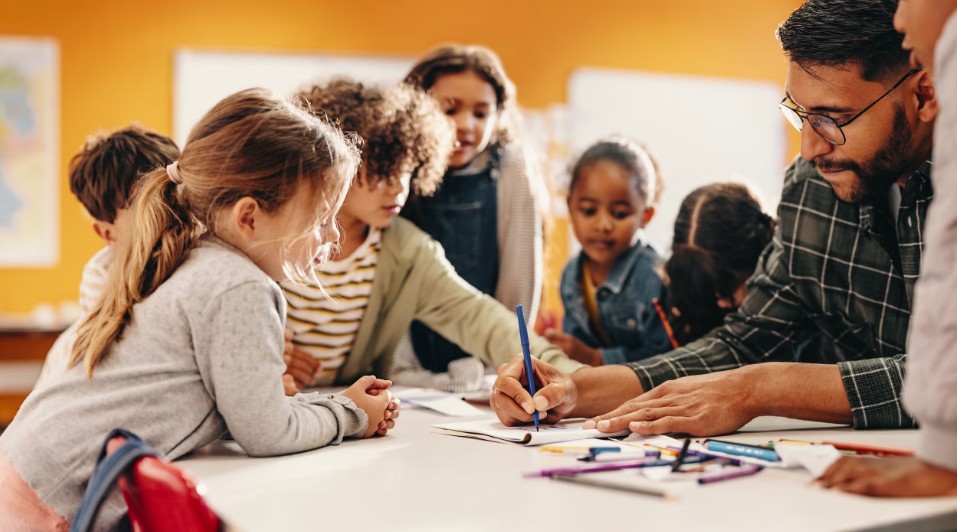JAKARTA, studyinca.ac.id – Art education is often seen as a supplementary aspect of the curriculum, yet its value in fostering creativity and self-expression cannot be overstated. My journey through teaching and engaging with art has profoundly changed my perspective on learning. This article explores how art education nurtures creativity, enhances critical thinking, and transforms the educational experience for both students and educators.
The Importance of Art Education

1. Defining Art Education
Art education encompasses a range of disciplines, including visual arts, music, theater, and dance. It encourages students to explore their creativity, express their thoughts and emotions, and develop a deeper understanding of the world around them.
2. Benefits of Art Education
Engaging with art offers numerous benefits, including:
- Enhanced Creativity: Art education encourages innovative thinking and problem-solving skills.
- Emotional Expression: Students learn to express their feelings and ideas through various artistic mediums.
- Cultural Awareness: Exposure to diverse artistic traditions fosters appreciation for different cultures and perspectives.
My Journey in Art Education
1. Discovering the Power of Creativity
Experience
When I first began teaching art, I approached it with a traditional mindset, focusing primarily on technical skills and art history. However, I quickly realized that the true power of art lies in its ability to foster creativity and personal expression.
Transformation
- Student-Centered Learning: I shifted my focus from merely teaching techniques to creating an environment where students felt empowered to explore their ideas and experiment with different mediums.
- Encouraging Risk-Taking: I encouraged students to take risks in their artwork, emphasizing that mistakes are part of the creative process and can lead to unexpected discoveries.
2. Integrating Art Across the Curriculum
Experience
Recognizing the interdisciplinary nature of art, I began integrating artistic practices into other subjects, such as science, history, and language arts.
Transformation
- Holistic Learning: This approach allowed students to connect concepts across disciplines, deepening their understanding and engagement.
- Creative Projects: For instance, I assigned projects where students created visual representations of scientific concepts, helping them grasp complex ideas through artistic expression.
3. Fostering a Supportive Community
Experience
Creating a classroom environment that promotes collaboration and support was crucial to my journey in art education.
Transformation
- Peer Feedback: I implemented structured peer feedback sessions, where students could share their work and provide constructive criticism. This fostered a sense of community and encouraged students to learn from one another.
- Celebrating Diversity: I emphasized the importance of diverse voices and perspectives in art, encouraging students to share their cultural backgrounds and experiences through their work.
Key Takeaways from My Journey
1. Embracing the Process Over the Product
Importance of Process
One of the most significant lessons I learned is to value the creative process over the final product. The journey of creating art is often more important than the end result.
- Reflection on Growth: Encourage students to reflect on their creative process, documenting their thoughts and changes throughout their projects.
- Focus on Exploration: Emphasize exploration and experimentation, allowing students to discover their unique artistic voices.
2. Encouraging Individual Expression
Personal Connection
Art is a deeply personal form of expression. Encouraging students to find their unique voice fosters confidence and authenticity.
- Personal Projects: Allow students to pursue personal projects that resonate with their interests and experiences, providing them with the freedom to express themselves fully.
- Showcasing Work: Create opportunities for students to showcase their work, whether through exhibitions, online platforms, or community events, reinforcing the value of their individual expressions.
3. Building Critical Thinking Skills
Art as a Thinking Tool
Art education enhances critical thinking skills by encouraging students to analyze, evaluate, and interpret various forms of artistic expression.
- Art Critiques: Incorporate art critiques into the curriculum, where students can discuss and analyze artworks, honing their analytical skills and fostering respectful discourse.
- Problem-Solving: Encourage students to approach artistic challenges with a problem-solving mindset, promoting resilience and adaptability.
4. Connecting Art to Real-World Issues
Relevance of Art
Art can serve as a powerful tool for addressing social issues and fostering awareness. Connecting art to real-world problems enhances its relevance and impact.
- Thematic Projects: Design projects that explore social justice, environmental issues, or cultural identity, encouraging students to use their art as a means of advocacy and expression.
- Community Engagement: Collaborate with local organizations to create art that addresses community needs, reinforcing the connection between art and civic responsibility.
Conclusion
My journey in art education has transformed my understanding of learning and the profound impact of creativity and expression. By fostering an environment that values the creative process, encourages individual expression, and connects art to real-world issues, we can empower students to become innovative thinkers and engaged citizens.
Art education is not merely an extracurricular activity; it is a vital component of a well-rounded education that nurtures creativity, critical thinking, and emotional intelligence. As educators, we have the opportunity to inspire the next generation of creators, thinkers, and leaders through the transformative power of art.
Improve Your Abilities: Explore Our content on Knowledge
Take a Look at Our Latest Article on Global Perspectives!

